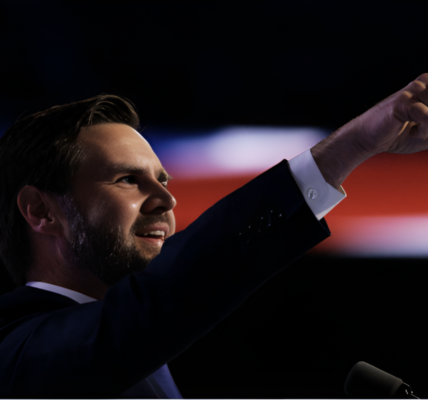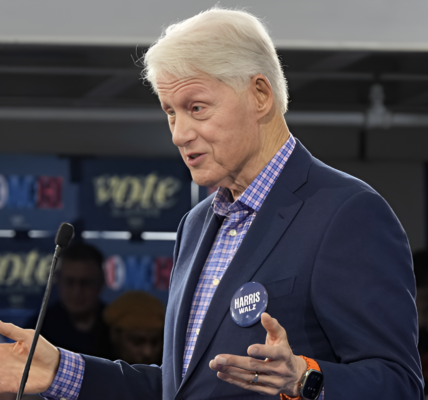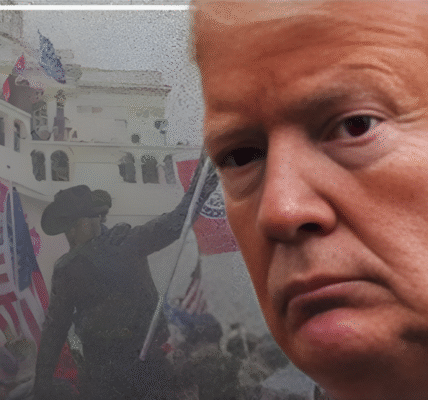
The public might be grumbling, and politicians may be painting pictures of doom and gloom, but here’s a refreshing dose of reality: America is thriving. As The Economist boldly proclaimed on its cover this week, the United States is once again “The Envy of the World.”
The stock market is soaring to record highs. The uninsured rate is near an all-time low. Apartment construction is booming at levels not seen in 50 years. Crime, inflation, and illegal immigration are falling, while economic growth, job creation, and wage increases remain strong. The U.S. is no longer entangled in wars in Iraq or Afghanistan (or anywhere officially), and its carbon emissions are declining thanks to a surge in clean energy production. The nation remains the richest, most innovative, and influential in the world—a land of opportunity that gave rise to the artificial intelligence revolution, SpaceX, and even the Hawk Tuah multimedia empire.
And as the cherry on top: After an 11-month hiatus without giant pandas, the National Zoo has welcomed two adorable cuddle-monsters back into its care.
Welcome to POLITICO Magazine’s fifth installment of “Everything Is Awesome!”
This column debuted in 2014 as a lighthearted rebuttal to the pervasive negativity that seemed to grip public and political discourse. The title, inspired by the catchy theme song from The Lego Movie, was tongue-in-cheek. The point wasn’t that everything was literally awesome, but that data consistently showed America was improving, even as many refused to believe it.
That gap between perception and reality feels especially relevant today. Half of Americans mistakenly think unemployment is at a 50-year high, despite it being near a 50-year low. Two-thirds of voters believe the country is on the wrong track, even as new business applications hit record highs, teen birth rates reach record lows, and the U.S. economy outpaces Europe’s post-Covid growth by more than double.
This misalignment of facts and feelings takes center stage during election cycles. Former President Donald Trump portrays America as a dystopian wasteland ravaged by crime, inflation, and immigration crises, while Vice President Kamala Harris opts to steer clear of touting the nation’s progress. Instead, she focuses on how Trump could make things worse.
The lack of acknowledgment of progress is a missed opportunity. History has shown the risks for incumbent parties unwilling to own the successes of their tenure. The “Everything Is Awesome” franchise emerged after Republicans dominated the 2014 midterms, a time when 62% of voters described the economy as “poor” despite its 5% growth rate. It continued in 2015 and 2016, as both Democrats and Republicans painted America as an apocalyptic nightmare, even as the country’s metrics soared.
But in the years following Trump’s election, as his administration denied inconvenient facts, perpetuated lies, and catered to divisive rhetoric, optimism felt misplaced. Then came Covid-19, the January 6 insurrection, and a host of other crises that put the column on ice for seven years.
Now, it’s time for a revival.
Under President Joe Biden, the U.S. has experienced a remarkable recovery from the pandemic-induced recession. Gas prices, which soared to $5 a gallon in 2022, are now averaging $3.20. Inflation, once at a worrying 9%, has fallen to just 2.4%, the lowest among G7 countries.
The economy has grown steadily for three years, surpassing its pre-Covid size and posting the strongest growth in the G7. The stock market repeatedly breaks records, foreclosures are down, manufacturing is booming, and unemployment has dropped from 14.8% during Covid to just 4.1%—the best among peer nations.
Despite Trump’s claims of a nation in crisis, illegal border crossings have decreased to their lowest levels since Covid. Fatal drug overdoses are declining for the first time in decades, and crime rates—both violent and property-related—are down from their 2020 levels.
It’s no wonder The Economist is singing America’s praises.
If things are so objectively awesome, why don’t Americans feel that way? The media’s emphasis on bad news certainly doesn’t help—stories about gas prices spiking or an impending recession generate more clicks than ones about falling prices or sustained economic growth.
Another factor is the sheer scale of polarization and misinformation. Three out of five Americans incorrectly believe we’re in a recession. Headlines like “Why Americans Feel Bad About a Good Economy” reflect the paradox of public perception.
Even political leaders contribute to the disconnect. Harris, during a recent debate, had the chance to deliver an emphatic “Yes!” when asked if Americans are better off than they were four years ago. Instead, she avoided the question, offering vague platitudes about lifting the middle class.
It’s a political gamble. Her campaign seems to be leaning on the strategy of positioning Harris as a change-maker, distancing her from Biden’s unpopular ratings while also acknowledging voters’ frustrations. But there’s risk in conceding that things are bad—it reinforces Trump’s narrative and undermines the very real progress achieved.
Let’s be clear: Not everything is awesome. The climate crisis looms large, political polarization is rampant, and many Americans continue to face challenges. But there’s plenty of reason for optimism.
The United States remains a global leader in innovation, economic strength, and opportunity. Its investments in infrastructure, clean energy, and advanced technologies are paying dividends. Even as challenges persist, there’s undeniable evidence that America is on an upward trajectory.
The takeaway? Don’t let the grumpy zeitgeist overshadow reality. Next year might not feel so awesome, but right now, things are looking up. And it’s okay—even patriotic—to say so.





